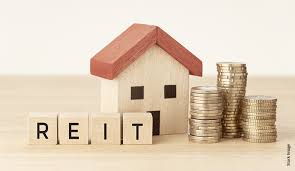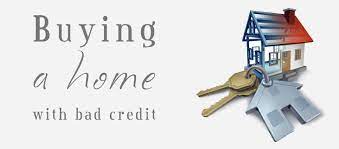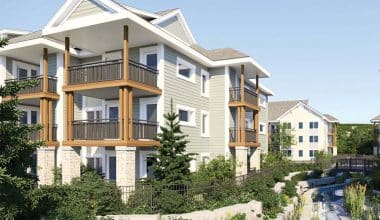The real estate management industry in the United States generates more than $99 billion in income each year. With so much money flowing through real estate rentals, it’s no surprise that several software companies have sprung up to assist investors, landlords, and property managers in staying organized, not only for daily tenant communication and management, but also for tax time.
We evaluated 20 free and paid real estate property management software providers to determine which will best suit you based on your portfolio size, building and tenant type, and budget. Continue reading to learn about each company’s strengths and shortcomings so you may pick the best fit for you.
What Functions Does Real Estate Management Software Serve?
The best real estate management software organizes rental properties, manages tenants, generates financial reports, and syncs and reconciles bank accounts for rental property investors and property managers.
Many real estate management software packages include tenant screening, lease drafting, online rent collecting, maintenance request management, and secure document storage.
Top 10 Best Real Estate Management Software In 2023
#1. Buildium
Buildium is one of the most comprehensive real estate management programs available today. Look no farther if you want software that can do it all.
This software includes a plethora of options for managing all elements of a rental property. You can handle vacancies, maintenance, and even accounting from the interface. The accounting suite is well-thought-out, with automatic rent reminders, a full ledger, and the ability to generate reports on demand. There is even an online tenant portal where tenants can make their rental payments.
The basic Buildium bundle is $50 per month and covers up to 150 units. If necessary, larger packages with support for up to 5,000 units at the maximum level can be purchased. Higher levels have lower unit costs, thus larger properties will get the best deal. Nonetheless, $50 per month for 150 units works out to $0.33 per unit, making it a negligible expenditure. Buildium also provides a 15-day free trial period to determine if it is right for you before purchasing a subscription.
#2. SparkRental
SparkRental is a fantastic piece of real estate management software for increasing your rental income stream. It allows you to post rental listings to several websites with a single click and seek free online rental applications. SparkRental allows you to collect rent online for free. In the spirit of giving, you can also obtain free prepopulated tenant notifications and eviction notices for each state.
You can also obtain tenant screening reports, which contain credit, criminal, and eviction information. This function costs a total of $39.90, which is charged to the renter. The software allows you to construct a lease bundle and is available in both a free edition and a premium state-specific bundle for $29.95.
#3. AppFolio
AppFolio is primarily intended for landlords with many properties, but it is also appropriate for any landlord looking to expand their business. It accommodates various types of units, from single-family houses to huge apartment complexes, and, most significantly, its services are customizable. Instead of an all-in-one fee, you pay a fixed fee per unit. There are no tiered pricing or other restrictions on the number of units you can manage. You also pay separately for advanced features, so you only pay for what you use.
To sign up, you must first pay a $400 onboarding charge. Following that, the unit fees are as follows:
- Residential rentals are $1.40 per month per unit.
- Commercial rates are $1.50 per month per unit.
- Student accommodation costs $1.40 per month per unit.
- HOAs: $0.80 per month per unit.
There is no minimum monthly cost of $280. To receive the best price on residential units, you’ll need at least 200 units.
#4. Propertyware
Propertyware is primarily aimed towards landlords of single-family dwellings. It lacks some functionality that other software suites have, but this is a feature, not a flaw. The UI is substantially simpler than most comparable software because there are no commercial rental capabilities, making it easier to learn and operate. In terms of the quantity of units, it works equally effectively whether you rent out a single property or hundreds.
There are three pricing tiers for this software: Basic, Plus, and Premium, which cost $1, $1.50, and $2.00 per unit, respectively. There is also a minimum payment for each tier, which is $250 per month for the Basic plan, $350 for Plus, and $450 for Premium. As a result, the best cost is only available if you manage at least 200 units.
#5. SimplifyEm
SimplifyEm was created for real estate professionals by real estate professionals. It can support up to 2,000 units, however it’s best suited to smaller landlords. If you have fewer than ten units, your monthly payment will be only $20. This increases by $10 per month for every 10 extra units purchased. So, if you have 50 units, your monthly fee is $60. It then switches to billing in 25-unit increments, however the base rate of $1 per unch remains same. There is also a 15-day free trial to test how it works before committing to a full subscription.
The simplicity of SimplifyEm is its key selling point. It’s intended to be simple to use even if you’ve never been a landlord before. To that purpose, their service includes live phone and email support, so you may obtain assistance with any problems.
You can also integrate with ACH.com, Fidelity, NARPM, TransUnion, Trulia, Zillow, and other services.
#6. MRI Software
MRI software is generally intended for commercial properties such as huge apartment buildings. These properties are often held by groups of investors as opposed to a single landlord, and those investors require tools and analyses that ordinary landlords do not. As a result, this program includes a variety of features that are not found in other similar software. It features a plethora of planning capabilities in addition to basic rental management. MRI Software can help you manage your assets, manage space, plan strategically, and maintain compliance with local affordable and public housing rules.
Pricing is a little less clear than in other real estate management programs. There is no free trial, and price is obtained by contacting MRI Software. It is also available in two forms: as an installed program or as a cloud-based service. Having said that, it has received generally positive feedback on a variety of landlord websites, with investors praising its value.
#7. Yardi Breeze
Yardi Breeze was among the first cloud-based real estate management software applications, and it remains among the best. They were in the industry even before the cloud. They were created in 1984, while PC software was still in its infancy.
Yardi Breeze’s pricing is transparent, which is a plus. Instead of tiers, they just charge a monthly fee of $1 per property. That’s really inexpensive, and it makes the software very competitive in today’s market. However, there is a monthly minimum charge of $100 for residential homes and $200 for commercial properties. As a result, maintaining properties with fewer than 100 units will cost you more. There is also a Breeze Plus upgrade package available. For both residential and commercial establishments, this costs $2 per unit, with a $400 monthly minimum. All programs include free training for the first 30 days and 24/7 customer support.
#8. Rent Manager
Rent Manager is a versatile property management platform that can handle any number of units. Not only that, but it’s ideal for usage on the run. You may access it from any computer via the cloud, but you can also download the smartphone app. From your phone’s screen, you can receive payments, enter work orders, and schedule maintenance. You may also snap images and save them to the cloud, which is important for maintenance.
You may generate financial reports, handle work orders, and advertise unoccupied units for rental on the portal. Rent Manager also includes a website-creation tool that allows you to construct a very professional-looking website for your property. Furthermore, you may trace maintenance requests from the beginning to the end. You must request a price quote via phone. However, if you want to give it a try, there is a free trial version available.
#9. Re-Leased
Re-Leased is intended for all types of properties, including commercial, residential, and office and industrial spaces. Pricing information, like that of a few of our other top software services, is not publicly available. To find out how much it will cost, contact and request a quote for your property. Customers have access to 24/7 customer service and an infinite number of units. If your company is expanding, you won’t have to worry about switching providers later.
You can use the software to automate a variety of monotonous jobs. You can use it to send out automated rent reminders and to automate your property listings. A built-in communications center links you, your maintenance workers, and your renters, greatly simplifying repair projects. You can also connect it to Google Calendar, Outlook, and Microsoft 365 to sync all of your calendars.
7 Best Free Property Management Software Systems
#1. Stessa
Stessa is a property management software that assists investors and property managers in optimizing the performance of their rental properties. Smart money management, computerized revenue and cost tracking, and individualized financial reporting can help real estate investors optimize earnings.
#2. Apartmentfinder.com
Apartments.com provides a comprehensive suite of online tools for leasing and managing rental property, including vacancy marketing, application screening, online lease signing, and rent collection. Landlords can manage tenants by centralizing information, tracking repair requests, and organizing finances.
#3. Cozy
Cozy is the next generation of free online real estate management software for landlords, allowing them to display homes, screen tenants, and collect rent for free.
Tenant applications can be viewed side by side, rent payments are deposited straight into the landlord’s bank account, and late fines are automatically charged to tenants. Expense monitoring, online repair requests, and receipt storage online make it easy to stay organized.
#4. Hunt
Hunt is a one-stop shop for landlords looking to automate rental management. Listings are promoted on over 50 rental listing sites, including Homes.com and Zumper, and have built-in rental applications and tenant screening.
#5. Innago
Innago is intended for all types of investors and properties, such as single-family rentals, student housing, and commercial complexes. Tenant screening with credit and eviction reports, online lease preparation and signing, online rent collection, maintenance tracking, and tenant management are all free property management features. There are no monthly or startup fees, and there are no contracts to sign.
#6. Rentler
Rentler is completely free and simple to use. Create an account, add rental properties with photographs and amenities, begin accepting instant online applications and tenant screenings, set up online payments, and manage properties all from your Rentler dashboard.
#7. TenantCloud
Do-it-yourself Landlords looking for a basic free real estate property management software solution may discover TenantCloud to be exactly what they need. The Free Trial Forever is valid for a total of 75 units. Additional services include TransUnion tenant screening, a rental report with detailed rental projections and market trend data, tenant insurance, and QuickBooks online synchronization.
How to Select Real Estate Management Software
Every piece of free real estate management software has its own collection of functions that fit into one of three categories:
#1. Leasing and marketing
- Syndication of vacant property marketing to high-traffic rental listing websites.
- No cost to the landlord for online rental application processing and tenant screening.
- Credit and background checks, rental history, and evictions are all part of the screening process.
- Lease documents and electronic signatures can be completed totally online.
- Tenant applications and executed leases are stored securely.
#2. Property management
- Online owner dashboard where landlords can engage with tenants and evaluate individual and portfolio property performance.
- Capability to share papers and financial reports with company partners and professionals such as a financial planner, CPA, or real estate attorney.
- Multiple user accounts can be created for remote access by different members of the real estate team.
- Track tenant maintenance and repair requests, including work histories and vendor notes.
#3. Reporting and Accounting
- Real-time tracking of income and expenses online, with a paper trail for auditing purposes.
- Rent payments are deposited into a bank account designated by the owner, with the option of several bank accounts.
- Create an endless number of financial reports, such as an income statement and a balance sheet, for each property and portfolio.
- Export tax-ready financials to simplify tax filing and save accountant or CPA fees.
- With the iOS and Android smartphone apps, you can upload invoices and track spending on the move.
What to Look for When Choosing Free Real Estate Property Management Software
Even though a property management software solution is free, it is still necessary to shop around. While it is easy to change software if your initial pick does not work as expected, the more data you will need to transfer to a different application the longer you use the system.
When shopping for free real estate property management software, keep the following points in mind:
- Hidden fees: Some real estate property management software suppliers promise a free trial, but monthly billing will begin once your property information is input and accounts are linked. Make careful to thoroughly study any additional costs or hidden charges, and contact customer service if you have any queries.
- Maximum properties: Most rental property owners discover that once they own and manage one property, they are eager to purchase another. Many property management software providers restrict the amount of units you can manage for free before you have to pay a monthly subscription.
- Read reviews: Astute real estate investors learn from their peers to avoid making the same mistakes. Numerous real estate platforms, like Stessa, Roofstock, and BiggerPockets, have blog pages with a wealth of useful information.
Summary
As you can see, there are numerous software packages accessible to landlords and real estate management. Some are more suited to larger or smaller properties, while some programs provide more or less capability. The key to choosing property management software is to choose one that is a good fit for you and your company.
Real Estate Management Software FAQs
What is real estate property management system?
A property management system (PMS) is a software application used to manage hospitality and commercial residential rental properties. PMS is also utilized in manufacturing, local government, and government.
Why have a real estate management system?
One of the most beneficial advantages of real estate management software is that it helps you and your tenants develop a stronger relationship. The ultimate goal, of course, is for each tenant to feel as though they are the only tenant (or at least the only one that matters).
How much does Yardi software cost?
Yardi Breeze costs $1 per unit per month, whereas Yardi Breeze Premier costs $2 per unit per month (minimums apply). Yardi Breeze costs $2 per month per unit (minimums apply).
Related Articles
- RENTAL PROPERTIES: Tips for Profitable Rental Properties Investing
- BUYING A RENTAL PROPERTY: Tips on Buying a Rental Property (Updated 2023)
- BUYING RENTAL PROPERTY: Tips For Buying Rental Properties
- HOW TO START A PROPERTY MANAGEMENT COMPANY: Tips for Starting a Property Management Company
- RENTING WITH BAD CREDIT: Even With a History of Evictions






